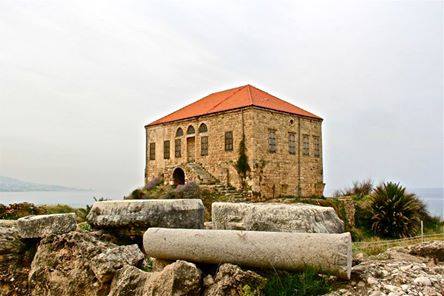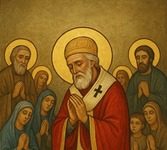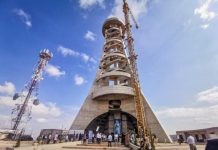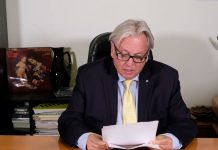LEBANESE HISTORY
THE MARONITES AND THE STATE OF GREAT LEBANON
(Year1920)
BY: Professor Antoine Khoury Harb
Following the triumph of the allies in 1918, Lebanon was liberated from four centuries of Ottoman hegemony. The four years of war have claimed the lives of one third of the Lebanese.
The Peace Conference held in Paris on January 18, 1919 was supposed to adopt President Wilson’s principle of the right of nations in auto – determination. The Lebanese, who lost important parts of their country, felt that it was time for them to materialize their grand dream of establishing Great Lebanon.
The Administrative Council of Mount Lebanon, which represented all Lebanese sects during the Mutasarrifiat System, met on December 1, 1918 and decided to send a delegation to the Peace Conference. The delegation was “to request the restoration of Lebanon as it was known historically and geographically taking into consideration the economic welfare of the nation”. The delegation was formed of seven members headed by Daoud Ammoun, the chairman of the Administrative Council. Ammoun presented the requests of the Administrative Council before the conference on February 13, 1919.
When Ammoun did not receive a final promise to enact these demands, he returned to Lebanon, summoned the Administrative Council on May 20, 19919, and issued a proclamation stating “the political and administrative independence of Lebanon in its historical and geographical boundaries including the previously usurped parts”.
On June 4, 1919 the Lebanese demonstrated by demanding the dispatch of another delegation to the Peace Conference in Paris, this time to be headed by the Maronite Patriarch.
On June 16, 1919 the Administrative Council delegated the Maronite Patriarch Elias Hoyek to head the second Lebanese delegation to the Peace Conference. The decision was seconded by request sent to the Patriarchal seat in Bkerki delegating the Patriarch to represent all the Lebanese in the Peace Conference.
Heading a huge delegation, the Patriarch left to Italy from the Port of Jounieh aboard a French naval vessel. On October 25, 1919 (the Mandate has already been decided) he arrived to Paris and submitted to the Conference a memorandum requesting “the recognition of Lebanon’s independence… the restoration of Lebanon in its full natural and historical borders including the regions usurped by Turkey … and for a French Mandate in Lebanon granting the inalienable rights of the Lebanon ultimate sovereignty”
On November 10, 1919 the French Prime Minister Clemenceau wrote to the Patriarch Hoyek confirming France’s approval of the demands submitted by the Maronite Patriarch. Upon his return to Lebanon Patriarch Hoyek was received as a victor.
Upon the insistence of Patriarch Hoyek, the Administrative Council agreed to send a third delegation headed by the Patriarchal Vicar Bishop Abdullah El-Khoury “to continue the efforts at the Peace Conference to get the previous demands enacted”. These demands contradicted with the Arab Prince Faysal’s demands to get the French government to recognize him as Kink over Great Syria.
Bishop El-Khoury succeeded in his mission. On August 31, 1920 a decree proclaimed the “restoration of Lebanon in its historical and geographical boundaries”. On September 1, 1920, General Gouraud, surrounded by Patriarch Elias Hoyek on his right and Mufti Mustafa Naja on his left, announced to the multitudes of political and religious leaders the creation of the “State of Great Lebanon”.
On September 1, 1920 Lebanon was restored to its historical and geographical boundaries. The Maronites, and all the Lebanese, who cherished similar aspirations, achieved their great and long-fought-for objective. This objective has governed their relations with the rest of the world in as much as it has directed their historical march.
What has been achieved on September 1, was not only a physical entity but a cultural and spiritual dimension nourished by the Lebanese soil and values. The “Maronite Nation’s” existential commitment to the values of the land has rendered it “geographical Nation” synonymous with the cultural precepts of the “Lebanese Nation”.
The Maronite Patriarchy, confirming the relationships between the physical, temporal, moral and cultural existence of the Maronites and the Lebanese terrain, adopted the motto: “The Glory of Lebanon is given unto Him”. This motto is the testimony of faith in Lebanon as a whole, for Lebanon cannot be but a whole. Moreover, the motto is a firm testimony of an everlasting Maronite Faith in Lebanon as the habitat of freedom, of values, the land of man.
“The Geographical environment allows a people, which is affected in his identity, because of a defective historic fate, to recover the original purity of his character”.
“The famous Lebanese historian Jawad Boulos”
N.B: The Conference for Peace, held in Paris January 18, 19919, adopted President Wilson’s principle: Peoples’ rights of self-determination. Patriarch Elias Hoyek was delegated as “High representative” of the Lebanese people to the conference.




















